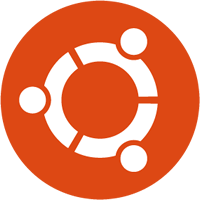Breaking Down the DevOps Lifecycle: Plan, Build, Release, Operate, and Monitor
The DevOps lifecycle is a dynamic and iterative process designed to improve the delivery, quality, and operation of software. By fostering collaboration between development and operations teams, the DevOps approach ensures faster and more reliable delivery of applications and services. Here, we’ll explore the five fundamental stages of the DevOps lifecycle: Plan, Build, Release, Operate, and Monitor.
1. Plan: Laying the Foundation
Planning is the cornerstone of any successful DevOps initiative. This stage involves:
Key Activities:
- Requirement Gathering: Collaborating with stakeholders to define the project’s objectives and deliverables.
- Roadmap Creation: Outlining a timeline with milestones to track progress.
- Tool Selection: Identifying tools for version control, project management, and communication (e.g., Jira, Confluence, Git).
- Risk Assessment: Analyzing potential roadblocks and dependencies.
Best Practices:
- Encourage frequent and transparent communication among team members.
- Use Agile methodologies to keep planning iterative and adaptive.
- Prioritize tasks based on business value and feasibility.
Tools Commonly Used:
- Jira, Trello, Azure Boards for task tracking.
- Slack, Microsoft Teams for communication.
- Git for version control.
2. Build: Developing and Integrating
The Build stage focuses on creating the software and preparing it for deployment.
Key Activities:
- Coding: Developers write code using programming languages and frameworks.
- Continuous Integration (CI): Code changes are automatically integrated into a shared repository.
- Automated Testing: Unit tests and integration tests are run to ensure code quality.
Best Practices:
- Implement modular code to make integration easier.
- Enforce coding standards and use static code analysis tools.
- Maintain a robust CI pipeline to catch issues early.
Tools Commonly Used:
- Jenkins, GitLab CI/CD, CircleCI for CI pipelines.
- SonarQube, ESLint for code quality checks.
- Selenium, JUnit for automated testing.
3. Release: Deploying with Confidence
Releasing software is a critical phase where the focus is on deploying the product seamlessly into the desired environments.
Key Activities:
- Packaging: Preparing the application for deployment in containers or artifacts.
- Configuration Management: Ensuring consistent application and environment setups.
- Continuous Delivery (CD): Automating deployment to staging or production environments.
- Approval Workflows: Including manual approvals where necessary for compliance.
Best Practices:
- Use blue-green or canary deployments to minimize downtime.
- Incorporate rollback mechanisms in case of failures.
- Document release notes and deployment processes for transparency.
Tools Commonly Used:
- Docker, Kubernetes for containerization and orchestration.
- Ansible, Chef, Puppet for configuration management.
- Spinnaker, ArgoCD for deployment automation.
4. Operate: Managing the Application
Once deployed, the application enters the Operate phase, where its performance and availability are managed.
Key Activities:
- Infrastructure Management: Maintaining servers, databases, and networks.
- Application Monitoring: Tracking application health and performance.
- Incident Response: Addressing outages and performance issues promptly.
- Scaling: Adjusting resources dynamically based on traffic and usage patterns.
Best Practices:
- Follow Infrastructure as Code (IaC) principles for consistent and repeatable setups.
- Regularly update and patch systems to maintain security.
- Establish runbooks for efficient incident handling.
Tools Commonly Used:
- AWS, Azure, Google Cloud for cloud infrastructure.
- Terraform, CloudFormation for IaC.
- PagerDuty, Opsgenie for incident management.
5. Monitor: Ensuring Continuous Improvement
Monitoring is essential for maintaining application reliability and gathering insights for future improvements.
Key Activities:
- Log Management: Collecting and analyzing logs for errors and anomalies.
- Performance Monitoring: Measuring latency, throughput, and error rates.
- User Feedback: Gathering input to refine features and functionality.
- Security Monitoring: Detecting vulnerabilities and suspicious activities.
Best Practices:
- Establish Service Level Objectives (SLOs) and Service Level Agreements (SLAs) to measure performance.
- Use anomaly detection tools to identify issues before they impact users.
- Automate alerts for critical thresholds and incidents.
Tools Commonly Used:
- Prometheus, Grafana for metrics visualization.
- ELK Stack (Elasticsearch, Logstash, Kibana) for log analysis.
- Splunk, New Relic, Datadog for application monitoring.
Integration Across the Lifecycle
While each stage of the DevOps lifecycle has its distinct focus, they are deeply interconnected:
- Automation: Automating repetitive tasks reduces errors and speeds up delivery.
- Collaboration: Encouraging cross-functional teamwork ensures smoother transitions between stages.
- Feedback Loops: Insights from monitoring inform planning and building, creating a cycle of continuous improvement.
Conclusion
The DevOps lifecycle—Plan, Build, Release, Operate, and Monitor—is a roadmap to efficient, reliable, and scalable software delivery. By adopting best practices and leveraging the right tools at each stage, organizations can achieve faster time-to-market, improved product quality, and enhanced customer satisfaction. Whether you’re just starting your DevOps journey or refining your existing processes, understanding and optimizing each phase is key to success.





